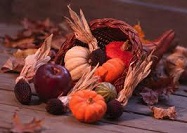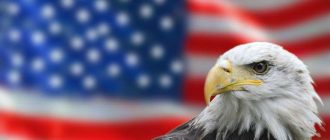Want to learn more about Native American Indian thanksgiving celebrations? Read on for facts and information on the history of the Native American Thanksgivings Day…
There is much debate and controversy over the concept of Thanksgiving amongst the Native American Indians. Some believe it was only after the colonial invasion that this concept crept into the Native Indian communities whereas others argue it had existed before.
The fact of the matter is that thanksgiving was practiced by the inhabitants of North America long before the colonials even dreamt of coming to the region. The Native American Indians would give thanks when they received a good crop or other bounties of life.
This celebration of thanksgiving was however in no way linked to the Christian concept of the holy day. With the invasion of the colonial powers the thanksgiving of the Native Americans became Christianized.
The First Native American Thanksgiving
The news of what is regarded as being the first official thanksgiving after the establishment of the pilgrims was made public on 25th September 1690. The first American newspaper developed by the Christianized Native American Benjamin Harris gave out the news of the celebration of Thanksgiving Day.
The first ever thanksgiving then took place in the fall of 1621. The Thanksgiving period lasted a total of three days and involved various religious rituals including fasting, religious services, prayers and a big shared meal. The first Thanksgiving Day was attended by ninety Native Americans in all.
Interestingly enough this kind of celebration never took place again. However it did become the model for all the thanksgiving celebrations that were to follow. More than anything else the first thanksgiving is a significant reflection of the easing of tensions between the Natives and the pilgrims.
For the Christian pilgrims the Native Americans were savages that desperately required the salvation of their religion. However the Native Americans had strong religious beliefs of their own and were deeply involved in spiritual activities. The pilgrims failed to realize this and went on an aggressive attempt to recruit these so called savages. When a Native American would accept Christianity he would be ostracized out of his tribe. For the pilgrims however he would become a disciple.
The first attempt at developing mutual relationships occurred over trading. Since the pilgrims were not well versed with farming they sought to make a deal with the Natives. However the Natives treated them rudely and this further fuelled the tempers on both sides.
The pilgrims then went on a colonization spree violating every sacred right of the natives. While the natives put forward their generosity the pilgrims hit back with relocations, seizure of lands, treaties and massacre.
When viewed in the light of the history mentioned above the first thanksgiving was not really about celebrating the bounties of the land. Rather it was a commemoration of the easing tensions between the two warring sides that had finally decided to come together.
Thanksgiving celebrations regarding the bounties of life however did not begin with the pilgrims. Rather the natives had been giving thanks for centuries since long before.





